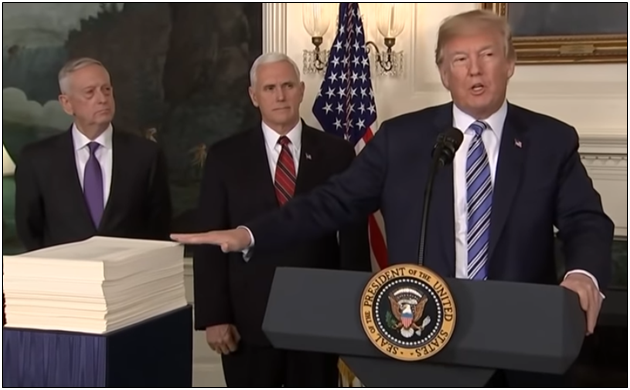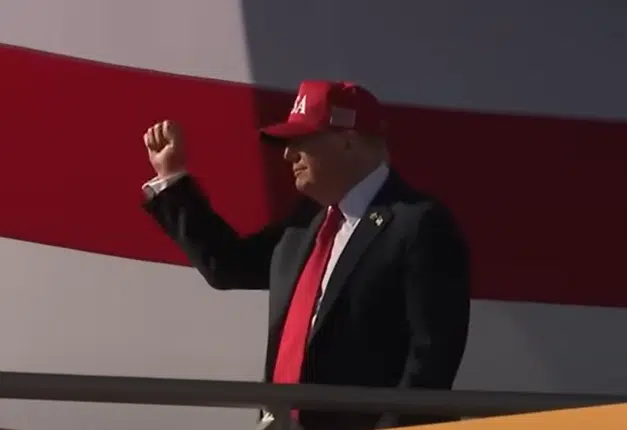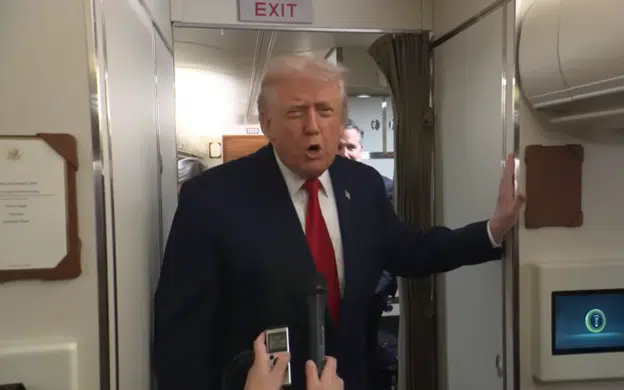By last count, Republicans lost at least 32 seats in the House in the midterm elections, and U.S. Rep. Nancy Pelosi (D-Calif.) is once again poised to be elected House Speaker. This means all legislation will now have to be worked out between a Democratic House and a Republican Senate led by Senate Majority Leader Mitch McConnell (R-Ky.).
To navigate these new waters in 2019, President Donald Trump has signaled a willingness to negotiate but he must remember that his greatest leverage could come in the House minority if he wishes to plot a more conservative path.
Certainly there will be last-minute attempts in the lame duck session to get things done with Republican majorities, which may or may not work. Time is not a luxury. Democrats will believe they can get a better deal in January and will block legislation in the Senate. It’s up to Trump to convince them otherwise.
Looking forward, then, with at least 199 members in the House, Trump and the GOP should have enough votes to sustain any presidential vetoes if they play their cards right. All Trump needs are 145 members who are willing to stand with the President.
It’s how Reagan got tax cuts and defense spending done with a Democratic House in the 1980s, and it’s how Trump can still get things done in 2019.
In “The Art of the Deal,” Trump wrote, “The worst thing you can do in a deal is seem desperate to make it. That makes the other guy smell blood, and then you’re dead.” He was right. It was the major reason why Republicans, besides increasing defense spending, were not able to accomplish much in enacting the President’s agenda — including fully funding and building the southern border wall — despite having majorities in both houses of Congress.
So terrified were Republicans in Congress were of a partial government shutdown, they never even tried to deliver full funding for the wall. It would cost them control of the House, the sage advisors in the D.C. establishment warned.
And therefore the wall was never funded. The government was not shut down. And the House GOP lost the election for the House and their majority anyway. Go figure.
This time, Trump does not have to make that mistake. Instead of relying on a Republican House majority to deliver the wall, he can instead use the art of the veto. He can veto the spending bills until he gets what he wants — as long as one-third of the House is willing to stand with the President and sustain the veto.
As Trump wrote in his book, “The best thing you can do is deal from strength, and leverage is the biggest strength you have. Leverage is having something the other guy wants. Or better yet, needs. Or best of all, simply can’t do without.”
Trump added, “Leverage: don’t make deals without it.” Well, a presidential signature is needed to pass legislation in Congress.
But to get the legislation he wants, the President must be willing to say no deal. Veto the spending bills in 2019. To ratchet up the pressure, Trump and House Republicans could threaten not to provide back pay for federal workers deemed non-essential in a government shutdown situation, but this will require spines of steel by members.
The President should therefore consult with Republican leaders in both chambers on any potential negotiating strategy with Democrats in 2019, but in the end, Trump must be willing to go to bat legislatively for his agenda if he want to see it through.
The first two years of Trump’s term, he relied on outgoing Speaker Paul Ryan (R-Wis.) to deliver key parts of his agenda. That failed, and Republicans arguably lost their House majority because of it. They didn’t fully repeal and replace Obamacare. The wall was not built. Non-defense spending was not cut as in Trump’s proposed budget. And so forth.
It wasn’t all the House’s fault. Obamacare repeal and replace actually passed the House, but it ran into a stone wall in the Senate. Once the late Sen. John McCain (R-Ariz.) voted against the bill, it was done. Still, it was House Republicans who paid the price on Nov. 6. Since then, they certainly did not do much to advance their cause. Where’s the wall?
Trump should be able to leverage that failure now to galvanize House Republicans behind the proposition of sustaining his vetoes. He may have to retool his legislative team at the White House to adjust to the new reality — and to exploit Pelosi’s weak position. If Congress cannot override the veto, Pelosi will have to come to the table to deal on the spending bills. She cannot impose her will on the Senate and the White House, something House Republicans had to painfully learn in 2011 and 2013. Now it’s Democrats’ turn to learn the same lesson.
Robert Romano is the Vice President of Public Policy at Americans for Limited Government.







